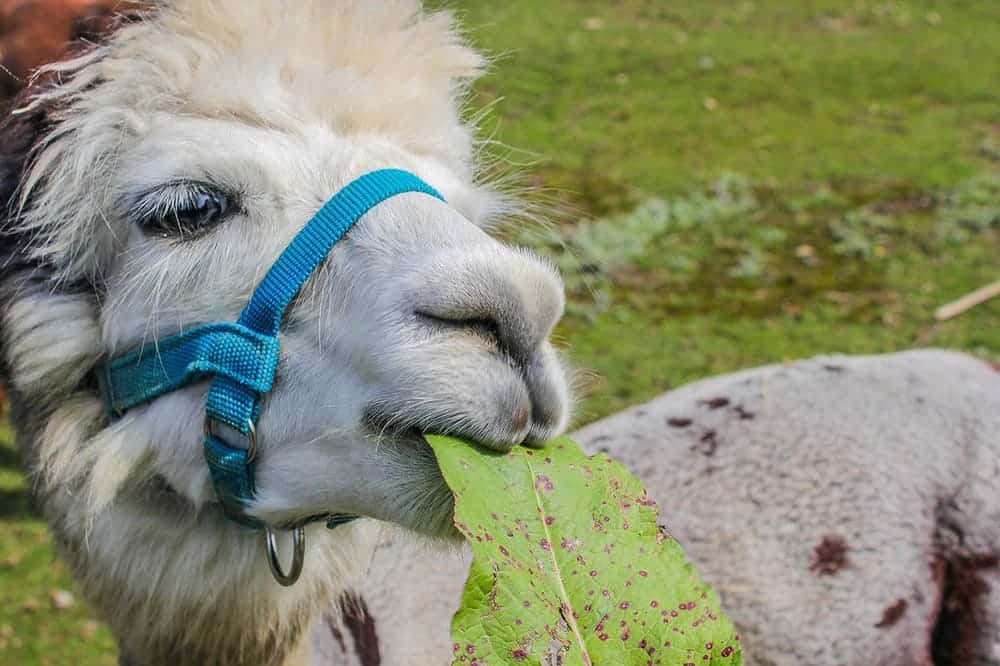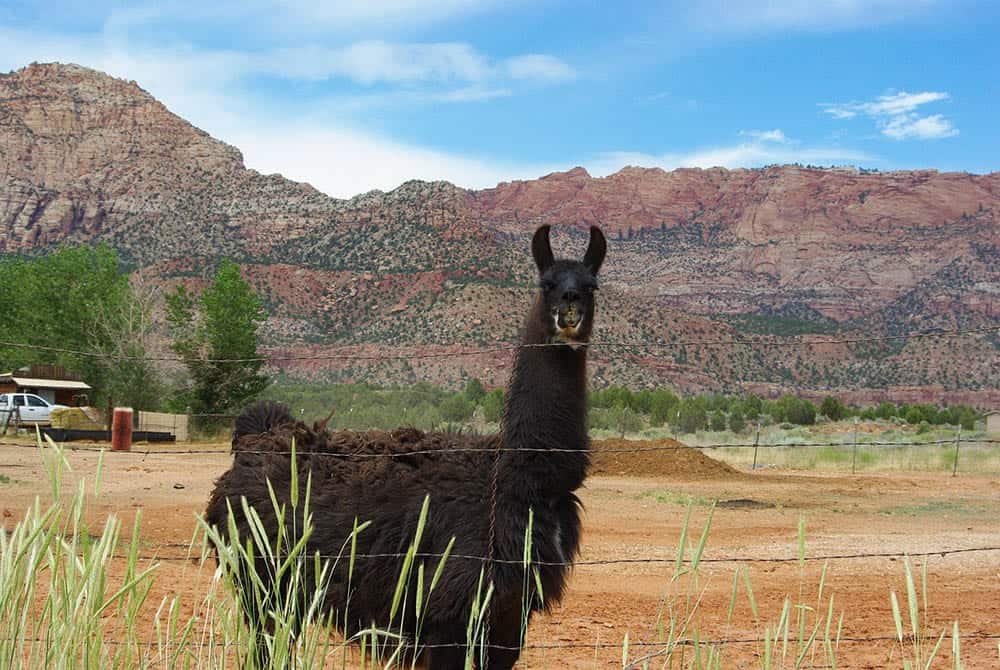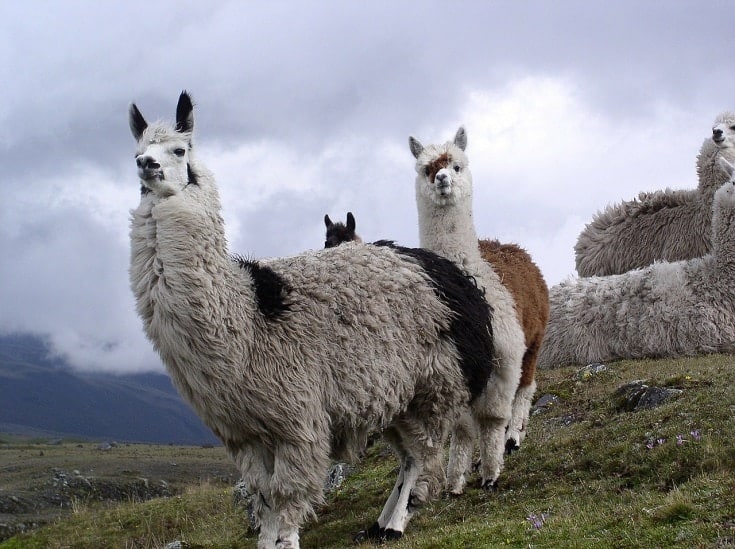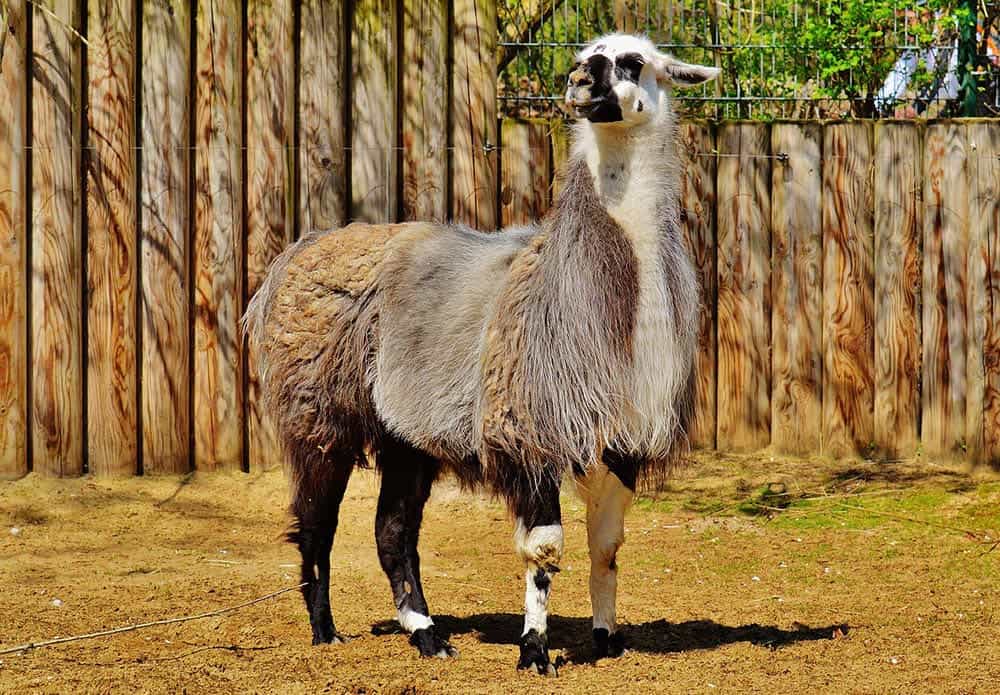Llamas originated in South America, specifically along a wide area along the base of the Andes Mountains. They are used as pack animals to carry loads as well as for their meat and wool and are often confused for alpacas. They come in a wide range of colors including white, gray, and brown, and are hardy, widespread animals that can be found all over the world.
Llamas are no longer found in the wild, and they are kept as domestic animals only. In captivity, they can live for 15–25 years. Read on below to find out how long these animals live in general, and some of the factors that affect their lifespan.
Click to Skip Ahead:

What’s the Average Lifespan of a Llama?
Llamas in captivity generally live for 15–25 years, with an average of about 20 years. While there are no more truly wild llamas, some are left to free-range in large areas, and these animals tend to have slightly shorter lifespans due to injury or disease.
Why Do Some Llamas Live Longer Than Others?
1. Nutrition
A llama’s natural diet consists mainly of grass and shrubs if they’re allowed to free-range, but many captive llamas are also fed on a diet of supplemental pellets consisting of corn, oats, and essential vitamins and minerals. Like cows, llamas regurgitate their food and chew it as cud. If a domesticated llama does not get the proper nutrients required in their diet and is fed inappropriate foods, their lifespans can be dramatically shortened.

2. Environment and Conditions
Llamas are tough, hardy animals that have adapted to a variety of environments. They have a high concentration of hemoglobin in their blood that helps them survive at high altitudes and in cold climates. They do not tolerate heat well, though, and can die from heat stress, and prefer temperatures close to 15–60 degrees F.
3. Housing
Llamas need a fair bit of space to live comfortably and need indoor housing space of at least 40 square feet per llama. Cramped conditions without access to pasture can quickly lead to disease, plus injury as they are prone to slipping on wet, slippery floors. Again, llamas are not tolerant to heat, and they need plenty of ventilation and shady space to be outdoors, otherwise, they can be highly susceptible to heatstroke.

4. Healthcare
Like any domestic animal, proper healthcare is vital to the health and longevity of llamas. These animals need to be regularly checked for any changes in appetite, appearance, energy, social changes, and weight changes, and spending a lot of time with your llama herd will help you to detect these issues much quicker. There are several health issues that llamas are predisposed to which can shorten their lifespan, including:
- Listeriosis
- Encephalitis
- Parasites
- Hepatic lipidosis
- Zinc deficiency

The 4 Life Stages of a Llama
Gestation and birth
Female llamas are pregnant for almost a year, typically around 360 days. Birthing usually takes 30 minutes or less, but llamas will not lick off the gooey afterbirth material as other mammals typically do. Baby llamas are known as crias and continue to rapidly grow until they’re around 2 years old. Crias are fed on mother’s milk for about 6 months, after which they are typically slowly weaned.
Young Llama
Young llamas grow rapidly and are known to put on up to 1 pound a day! They are also far more active than adults, and thus need to be fed a lot more nutrient-rich foods in higher quantities than adults. This is typically almost twice the amount that regular maintenance requires until they reach 18 months old, after which their rations can be slowly reduced.

Mature Adult
Llamas grow rapidly for about 2 years, but only reach full maturity at around 3 years old. If adult llamas are put to work, pulling carts, or carrying heavy loads, they’ll require more concentrated energy in their diet.
Senior
With more knowledge on the care and maintenance of llamas today, modern llamas are reaching much older ages than usual, up to 25 years in some cases. Senior llamas are typically far less active, and thus don’t have the need for energy-rich foods. That said, their digestive tract slowly becomes less efficient at absorbing nutrients, and so they’ll need an increase in vitamin and mineral levels overall.

How To Tell Your Llama’s Age
It can be tricky to determine the exact age of a llama, although there are some ways to get a rough estimate. One method is by checking a llama’s teeth. Newborn llamas will not have any teeth, but by 1-month-old will develop two cheek teeth on each side of their top jaw, and one cheek tooth plus two front teeth on their bottom jaw. By 6 months, they will have one front, one canine, and two cheek teeth on either side of their top jaw, and three front, one canine, and two cheek teeth on their bottom jaw. The large permanent incisors replace the front “milk” teeth at about 2 years old, while the middle incisors only appear at around 3 years old.

Conclusion
Llamas in captivity generally live for 15–25 years, with an average of about 20 years and a maximum of around 28 years. Ensuring your llama has a healthy, balanced diet, plenty of space to forage, and a well-ventilated spacious enclosure will go a long way in extending their lifespan for as long as possible.
Featured Image Credit: Pixabay
